

Get in the KNOW
on LA Startups & Tech
XImage by Candice Navi
Here Are LA's Top VCs, According to Their Peers
Ben Bergman
Ben Bergman is the newsroom's senior finance reporter. Previously he was a senior business reporter and host at KPCC, a senior producer at Gimlet Media, a producer at NPR's Morning Edition, and produced two investigative documentaries for KCET. He has been a frequent on-air contributor to business coverage on NPR and Marketplace and has written for The New York Times and Columbia Journalism Review. Ben was a 2017-2018 Knight-Bagehot Fellow in Economic and Business Journalism at Columbia Business School. In his free time, he enjoys skiing, playing poker, and cheering on The Seattle Seahawks.
Though Silicon Valley is still very much the capital of venture capital, Los Angeles is home to plenty of VCs who have made their mark – investing in successful startups early and reaping colossal returns for their limited partners.
Who stands out? We thought there may be no better judge than their peers, so we asked 28 of L.A.'s top VCs who impresses them the most.
The list includes many familiar names. Dana Settle, founding partner of Greycroft, and Mark Mullen, founding partner of Bonfire Ventures, garnered the most votes.
Settle manages West Coast operations for Greycroft, a New York firm with $1.8 billion in assets under management. She is one of only nine of the top 100 VCs nationally who are women, according to CB Insights.
Mullen is a founding partner of Bonfire Ventures, which closed a $100 million second fund in September to continue funding seed stage business-to-business (B2B) software startups. Mullen has also been an angel investor and is an LP in other funds focusing on other sectors, including MaC VC and BAM Ventures.
Below is the list of the top ranked investors by how many votes each received from their peers. When there was a tie, they appear in alphabetical order according to their last name:
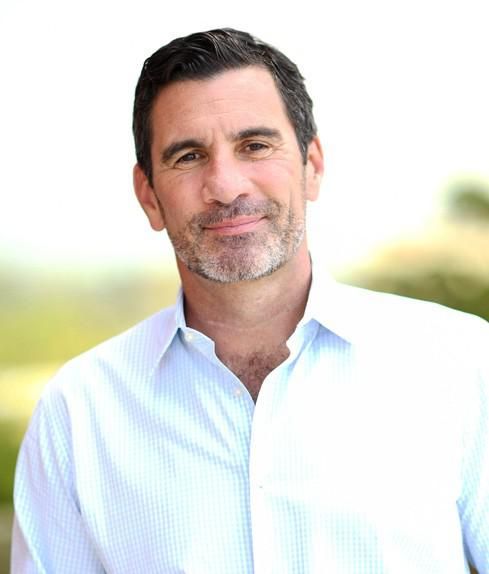
Mark Mullen, Bonfire Ventures
Mark Mullen is a founding partner of Bonfire Ventures. He is also founder and the largest investor in Mull Capital and Double M Partners, LP I and II. A common theme in these funds is a focus on business-to-business media and communications infrastructures.
In the past, Mullen has served as the chief operating officer at the city of Los Angeles' Economic Office and a senior advisor to former Mayor Villaraigosa, overseeing several of the city's assets including Los Angeles International Airport and the Los Angeles Convention Center. Prior to that, he was a partner at Daniels & Associates, a senior banker when the firm sold to RBC Capital Markets in 2007.
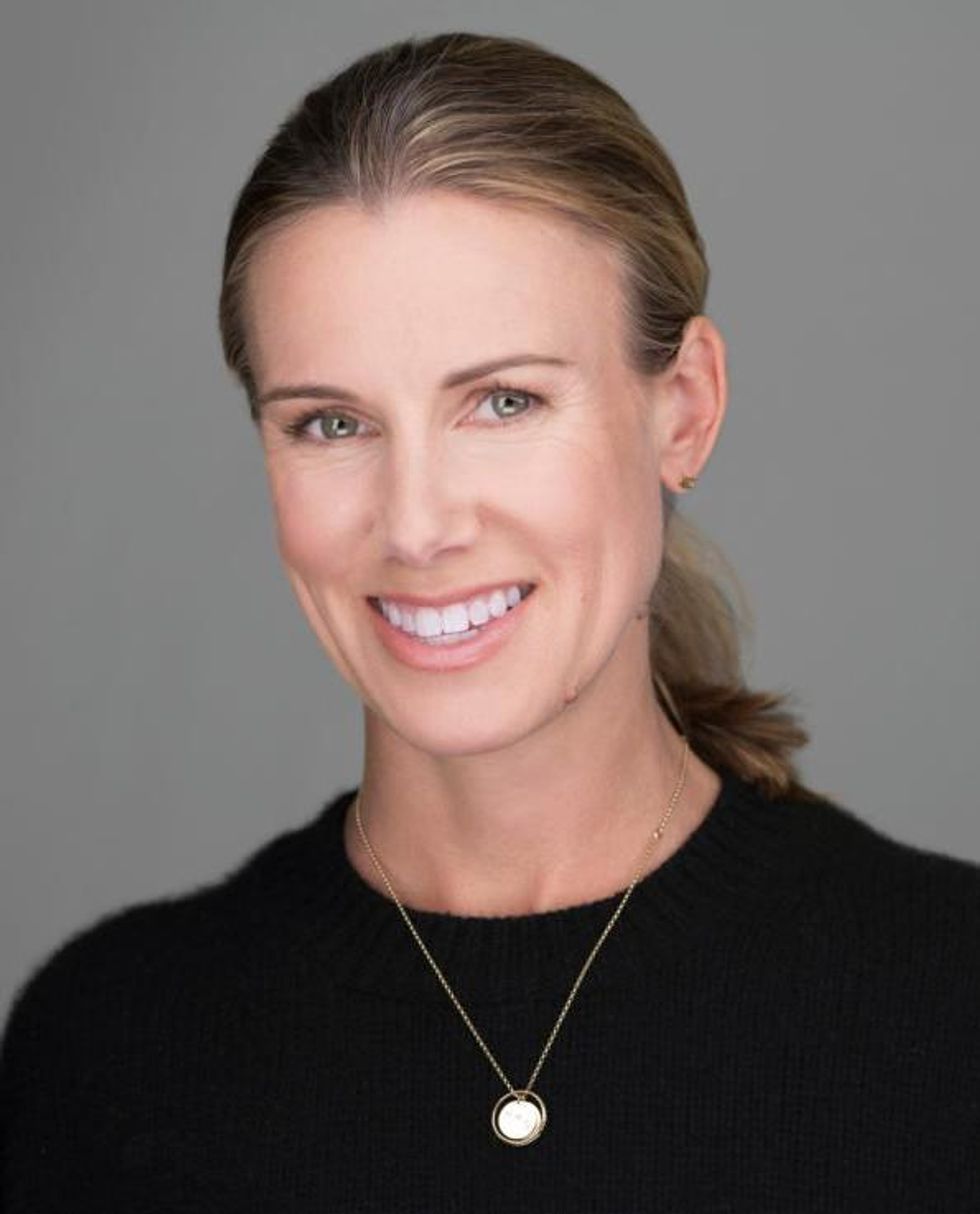
Dana Settle, Greycroft
Dana Settle is a founding partner of Greycroft, heading the West Coast office in Los Angeles. She currently manages the firm's stakes in Anine Bing, AppAnnie, Bird, Clique, Comparably, Goop, Happiest Baby, Seed, Thrive Market, Versed and WideOrbit, and is known for backing female-founded companies.
"The real change takes place when female founders build bigger, independent companies, like Stitchfix, TheRealReal," she said this time last year in an interview with Business Insider. "They're creating more wealth across their cap tables and the cap tables tend to be more diverse, so that gives more people opportunity to become an angel investor." Prior to founding Greycroft, she was a venture capitalist and startup advisor in the Bay Area.
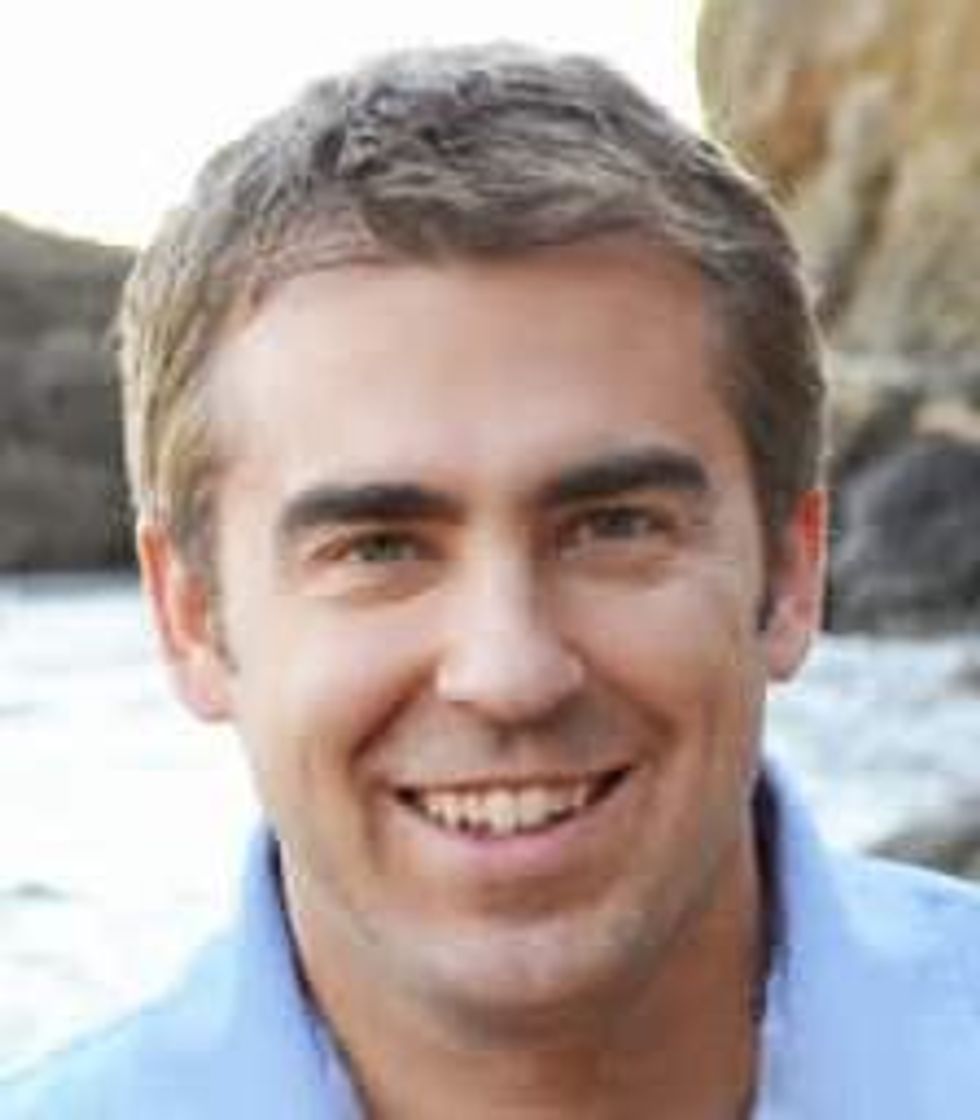
Erik Rannala, Mucker Capital
Erik Rannala is a founding partner at Mucker Capital, which he created with William Hsu in 2011. Before founding Mucker, Rannala was vice president of global product strategy and development at TripAdvisor and a group manager at eBay, overseeing its premium features business.
"As an investor, I root for startups. It pains me to see great teams and ideas collapse under the pressure that sometimes follows fundraising. If you've raised money and you're not sure what comes next, that's fine – I don't always know either," Rannala wrote in a blog post for Mucker.
Mucker has a portfolio of 61 companies, including Los Angeles-based Honey and Santa Monica-based HMBradley.

William Hsu, Mucker Capital
William Hsu is a founding partner at the Santa Monica-based fund Mucker Capital. He started his career as a founder, creating BuildPoint, a provider of workflow management solutions for the commercial construction industry not long after graduating from Stanford.
In an interview with Fast Company, he shared what he learned in the years following, as he led product teams at eBay, Green Dot and Spot Runner, eventually becoming the SVP and Chief Product Officer of At&T Interactive: "Building a company is about hiring correctly, adhering to a timeline, and rigorously valuing opportunity. It's turning something from inspiration and creative movement into process and rigor."
These are the values he looks for in founders in addition to creativity. "I like to see the possibility of each and every idea, and being imaginative makes me a passionate investor."
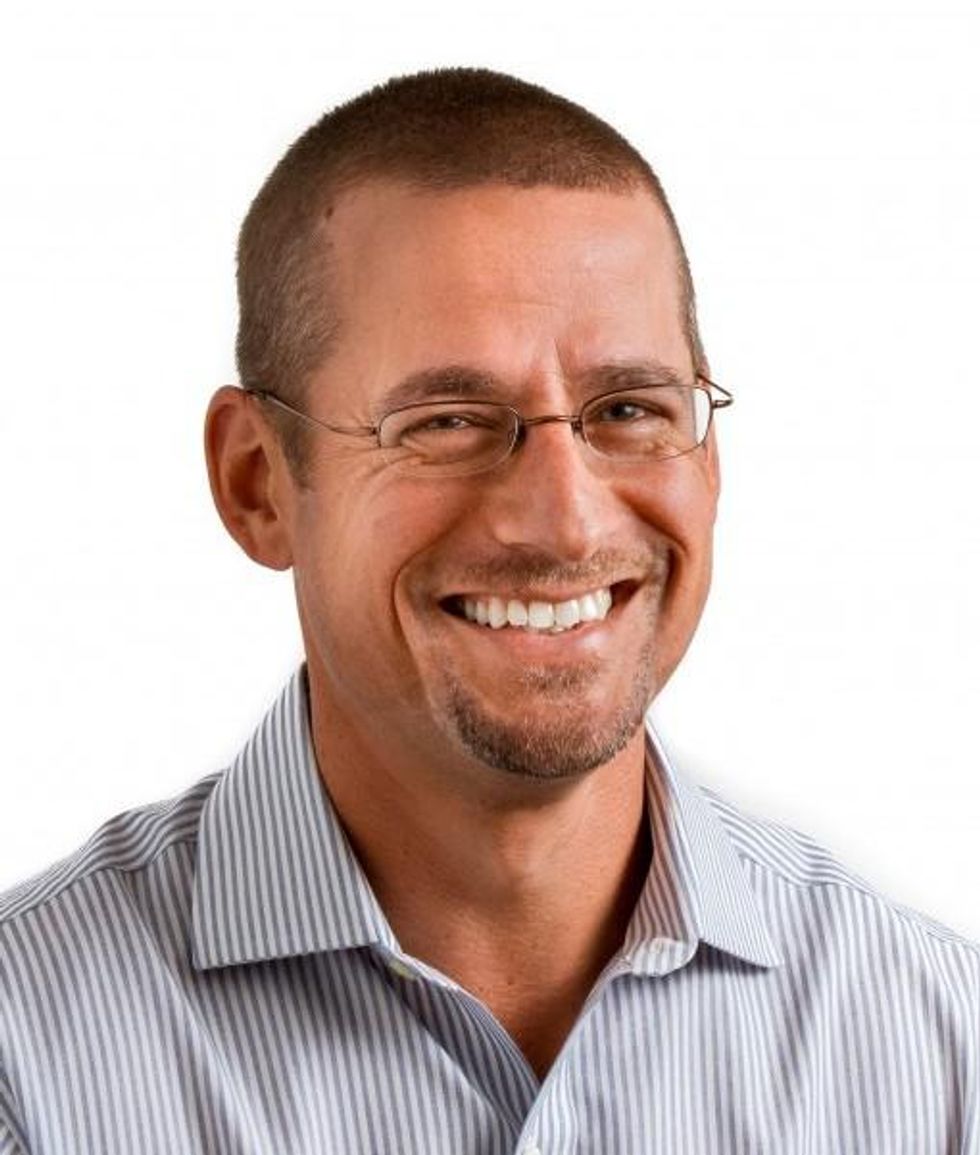
Jim Andelman, Bonfire Ventures
Jim Andelman is a founding partner of Bonfire Ventures, a fund that focuses on seed rounds for business software founders. Andelman has been in venture capital for 20 years, previously founding Rincon Venture Partners and leading software investing at Broadview Capital Partners.
He's no stranger to enterprise software — he also was a member of the Technology Investment Banking Group at Alex. Brown & Sons and worked at Symmetrix, a consulting firm focusing on technology application for businesses.
In a podcast with LA Venture's Minnie Ingersoll earlier this year, he spoke on the hesitations people have about choosing to start a company.
"It's two very different things: Should I coach someone to be a VC or should I coach someone to enter the startup ecosystem? On the latter question, my answer is 'hell yeah!'"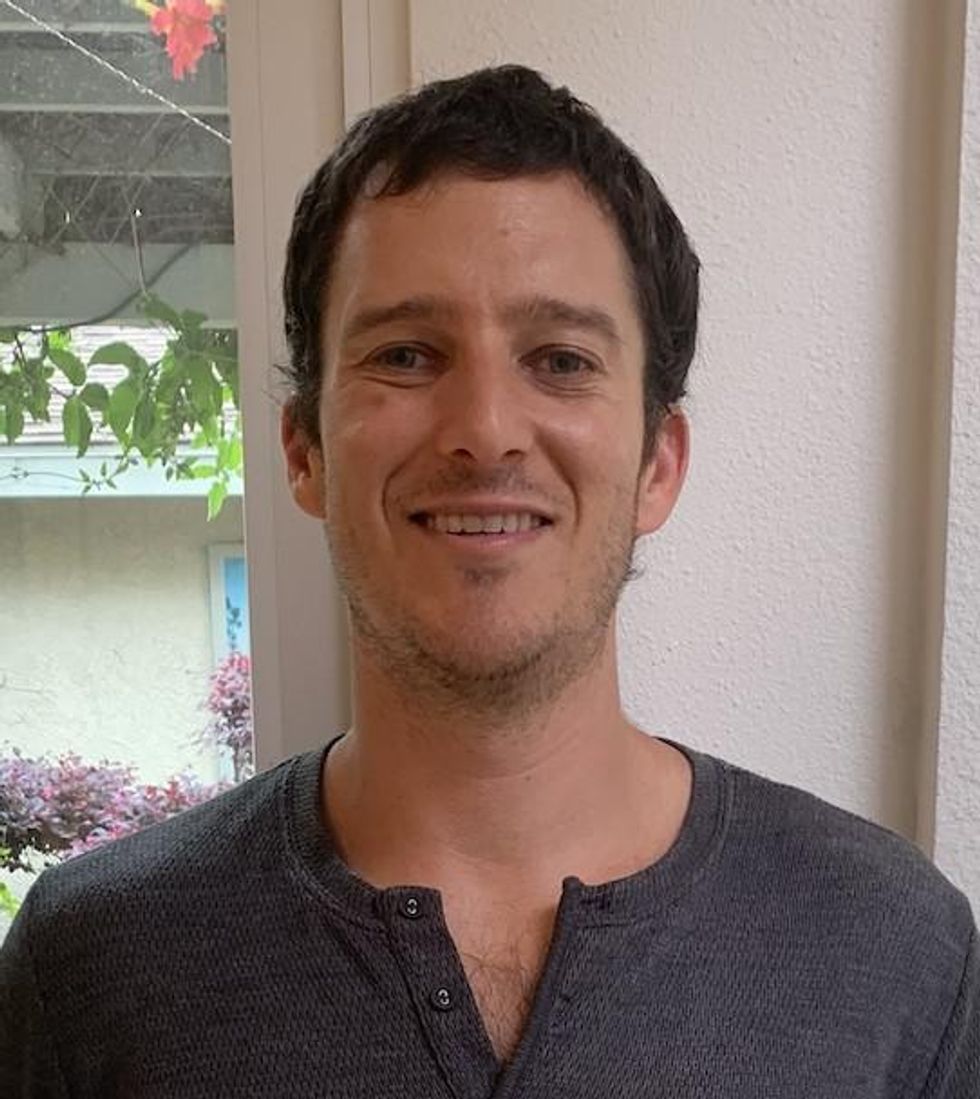
Josh Diamond, Walkabout Ventures
Josh Diamond founded Walkabout Ventures, a seed fund that primarily focuses on financial service startups. The firm raised a $10 million fund in 2019 and is preparing for its second fund. Among its 19 portfolio companies is HMBradley, which Diamond helped seed and recently raised $18 in a Series A round.
"The whole reason I started this is that I saw there was a gap in the funding for early stage, financial service startups," he said. As consumers demand more digital access and transparency, he said the market for financial services is transforming — and Los Angeles is quickly becoming a hub for fintech companies. Before founding Walkabout, he was a principal for Clocktower Technology Ventures, another Los Angeles-based fund with a similar focus.
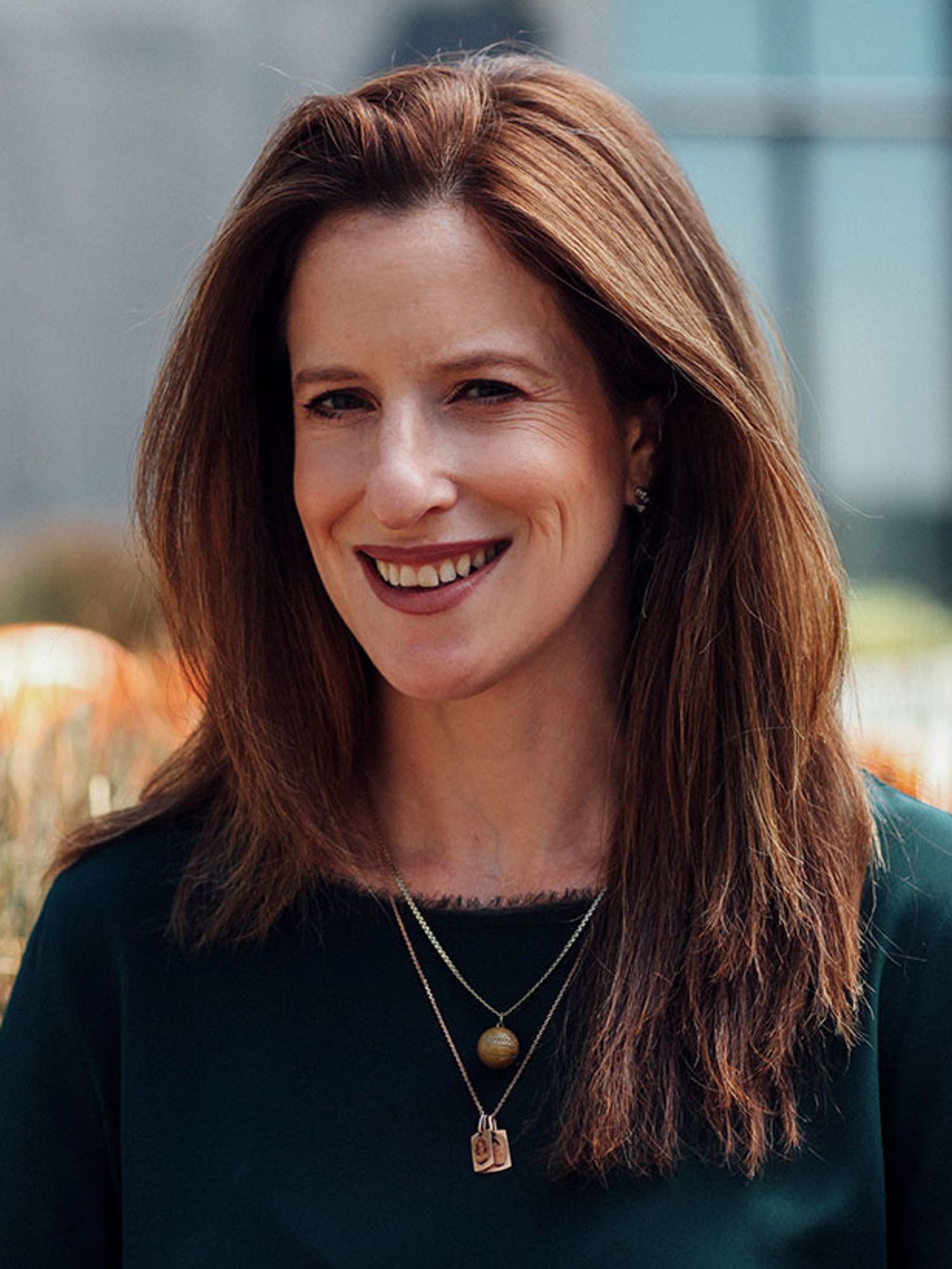
Kara Nortman, Upfront Ventures
Kara Nortman was recently promoted to managing partner at Upfront Ventures, making her one of the few women – along with Settle – to ascend to the highest ranks of a major VC firm.
Though Upfront had attempted to recruit her before she joined in 2014, she had declined in order to start her own company, Moonfrye, a children's ecommerce company that rebranded to P.S. XO and merged with Seedling. Upfront invested in the combination, and shortly after, Nortman joined the Upfront team.
Before founding Moonfrye, she was the SVP and General Manager of Urbanspoon and Citysearch at IAC after co-heading IAC's M&A group.
In an interview with dot.LA earlier this year, she spoke on how a focus for her as a VC is to continue to open doors for founders and funders of diverse backgrounds.
"Once you're a woman or a person of color in a VC firm, it is making sure other talented people like you get hired, but also hiring people who are not totally like you. You have to make room for different kinds of people. And how do you empower those people?"
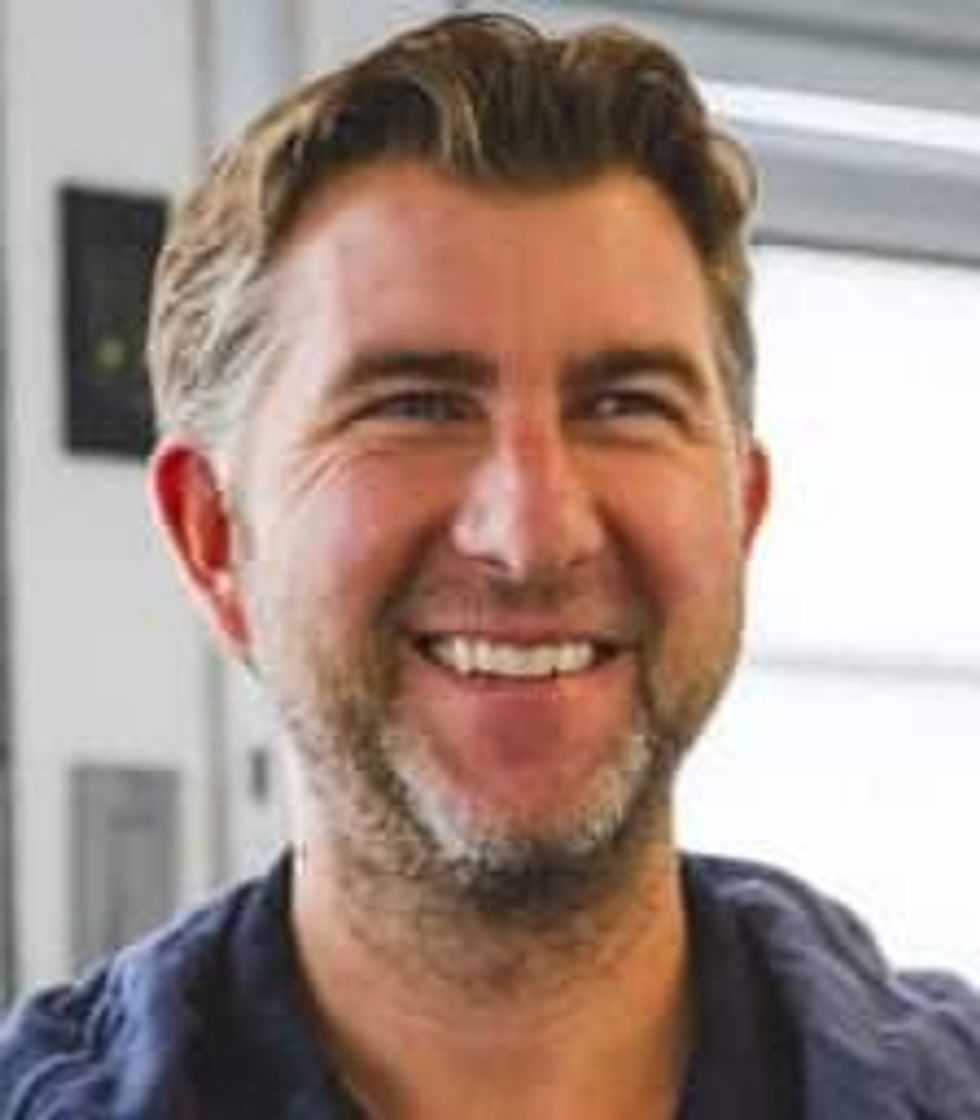
Brett Brewer, Crosscut Ventures
Brett Brewer is a co-founder and managing director of Crosscut Ventures. He has a long history in entrepreneurship, starting a "pencil selling business in 4th grade." In 1998, he co-founded Intermix Media. Under their umbrella were online businesses like Myspace.com and Skilljam.com. After selling Intermix in 2005, he became president of Adknowledge.com.
Brewer founded Santa Monica-based Crosscut in 2008 alongside Rick Smith and Brian Garrett. His advice to founders on Crosscut's website reflects his experience: "Founders have to be prepared to pivot, restart, expect the unexpected, and make tough choices quickly... all in the same week! It's not for the faint of heart, but after doing this for 20 years, you can spot the fire (and desire) from a mile away (or not)."

Eva Ho, Fika Ventures
Eva Ho is a founding partner of Fika Ventures, a boutique seed fund, which focuses on data and artificial intelligence-enabled technologies. Prior to founding Fika, she was a founding partner at San Francisco-based Susa Ventures, another seed-stage fund with a similar focus. She is also a serial entrepreneur, most recently co-founding an L.A. location data provider, Factual. She also co-founded Navigating Cancer, a health startup, and is a founding member of All Raise, a nonprofit that supports and provides resources to female founders and funders.
In an interview with John Livesay shortly before founding Fika, Ho spoke to how her experience at Factual helped focus what she looks for in founders. "I always look for the why. A lot of people have the skills and the confidence and the experience, but they can't convince me that they're truly passionate about this. That's the hard part — you can't fake passion."

Brian Lee, BAM Ventures
Brian Lee is a co-founder and managing director of BAM Ventures, an early-stage consumer-focused fund. In an interview with dot.LA earlier this year, Lee shared that he ended up being the first investor in Honey, which was bought by PayPal for $4 billion, through investing in founders and understanding their "vibe."
"There's certain criteria that we look for in founders, a proprietary kind of checklist that we go through to determine whether or not these are the founders that we want to back…. [Honey's founders] knew exactly what they were building, and how they were going to get there."
His eye for the right vibe in a founder is one gleaned from experience. Lee is a serial entrepreneur, founding LegalZoom.com, ShoeDazzle.com and The Honest Company.
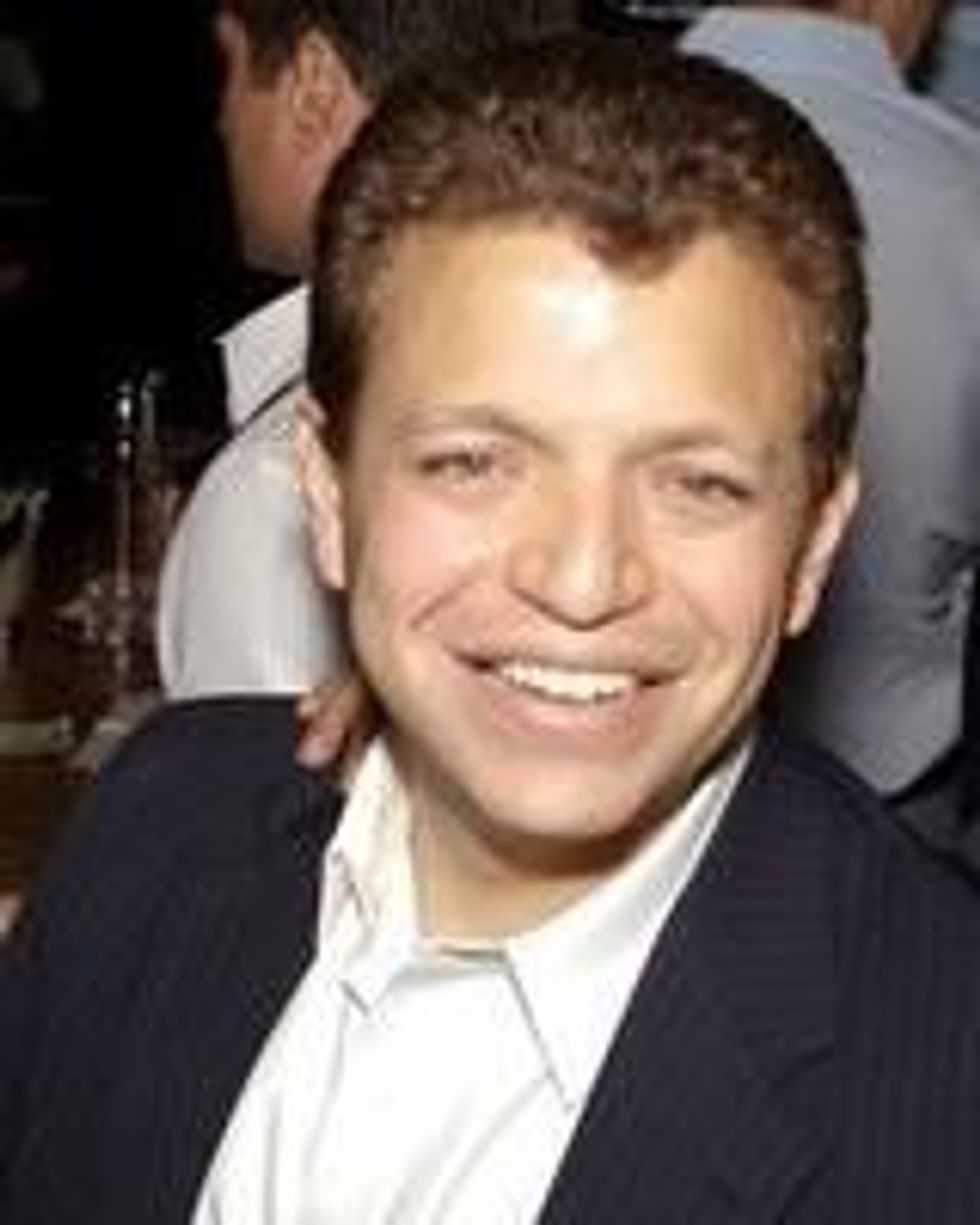
Alex Rubalcava, Stage Venture Partners
Alex Rubalcava is a founding partner of Stage Venture Partners, a seed venture capital firm that invests in emerging software technology for B2B markets. Prior to joining, he was an analyst at Santa Monica-based Anthem Venture Partners, an investor in early stage technology companies. It was his first job after graduating from Harvard, and during his time at Anthem the fund was part of Series A in companies like MySpace, TrueCar and Android.
He has served as a board member in several Los Angeles nonprofits and organizations like KIPP LA Schools and South Central Scholars.
"Warren Buffett says that he's a better businessman because he's an investor, and he's a better investor because he's a businessman. I feel the same way about VC and value investing. Being good at value investing can make you good at venture capital, and vice versa," Rubalcava said in an interview with Shai Dardashti of MOI Global.

Mark Suster, Upfront Ventures
Mark Suster, managing partner at Upfront Ventures, is arguably L.A.'s most visible VC, frequently posting on Twitter and on his blog, not only about investing but also more personal topics like weight loss. In more normal years, he presides over LA's biggest gathering of tech titans, the Upfront Summit. Before Upfront, he was the founder and chief executive officer of two software companies, BuildOnline and Koral, which was acquired by Salesforce. Upfront backed both of his companies, and eventually he joined their team in 2007.
In a piece for his blog, "Both Sides of the Table," Suster wrote about the importance of passion — not just for entrepreneurs and their businesses, but for the VCs that fund them as well.
"On reflection of the role that I want to play as a VC it is clearly in the camp of passion. I really want to start my journeys only with people with whom I want to work closely with for the next 5–7 years or more. I only want to work on projects in which I believe can produce truly amazing change in an industry or in the world."
Lead art by Candice Navi.
From Your Site Articles
- Here Are Los Angeles' Top Venture Capitalists - dot.LA ›
- Ten Venture Capital Firms Commit to 'Diversity' Rider' - dot.LA ›
- Navigating the Venture Capital World as a Black Person - dot.LA ›
- The Largest Venture Capital Raises in Los Angeles in 2020 - dot.LA ›
- Los Angeles Venture Funds Grow, but Spend Less in LA - dot.LA ›
- dot.LA's Venture Capital Survey for Q1 2021 - dot.LA ›
- Meet Scott Lenet, Co-Founder, President and Educator - dot.LA ›
- LA VC's Hosted Their First Party in 14 Months - dot.LA ›
- Los Angeles’ Top Investors Under 30 According to Their Peers - dot.LA ›
- TX Zhuo is Behind Fika Ventures' $77 million Fund ›
- Los Angeles Notches Record Levels of VC Investment in Q2 - dot.LA ›
- VCs See Valuations Reach Record Highs as Optimism Stays High - dot.LA ›
- Top LA Angel Investors 2021: McInerney, Rascoff and Lee - dot.LA ›
- LA Venture: Chirag Chotalia on Threshold Ventures - dot.LA ›
- CrossCut Ventures' Rick Smith on Coming to Venture Capital - dot.LA ›
- Event: Investors & Entrepreneurs Networking in Los Angeles - dot.LA ›
- Los Angeles Startups Closed a Record Number of Deals in Q3 - dot.LA ›
- Southern California Venture Capitalists See a Tech Bubble - dot.LA ›
- Pear VC’s Pejman Nozad on Early-Stage VC - dot.LA ›
- Bonfire Ventures Is Raising a $165 Million For Its Third Fund - dot.LA ›
- 5 Highlights From a Record-Smashing 2021 for SoCal Startups and VCs - dot.LA ›
- Los Angeles Venture Capital Activity Was Up in Q3 - dot.LA ›
- LA Is The Third-Largest Startup Ecosystem in the U.S. - dot.LA ›
- LA's Top Venture Capitalists of 2022 - dot.LA ›
- Crosscut’s Brett Brewer on Starting Intermix Media and Myspace - dot.LA ›
- Venture Deals in LA Are Slowing Down - dot.LA ›
- Venture Deals Fall in LA Amid Economic Worries - dot.LA ›
- LA Seed Deals Hold Steady Despite Despite Economic Worries - dot.LA ›
- PitchBook Reports Fewer Tech Investments - dot.LA ›
- LA Venture Investments to Women & Founders of Color Dropped - dot.LA ›
- GoFreight Raises $23 Million, Valcre Secures $12.7M - dot.LA ›
- Here Are The Top Venture Capitalists In 2023 - dot.LA ›
- Pagos Secures $34M, Champions Round Picks Up $7M - dot.LA ›
- Toba Capital's Patrick Mathieson On How to Support Founders - dot.LA ›
- B Capital's Howard Morgan On Key To Early Stage Investing - dot.LA ›
Related Articles Around the Web
Ben Bergman
Ben Bergman is the newsroom's senior finance reporter. Previously he was a senior business reporter and host at KPCC, a senior producer at Gimlet Media, a producer at NPR's Morning Edition, and produced two investigative documentaries for KCET. He has been a frequent on-air contributor to business coverage on NPR and Marketplace and has written for The New York Times and Columbia Journalism Review. Ben was a 2017-2018 Knight-Bagehot Fellow in Economic and Business Journalism at Columbia Business School. In his free time, he enjoys skiing, playing poker, and cheering on The Seattle Seahawks.
https://twitter.com/thebenbergman
ben@dot.la
Salt AI Secures $10M to Untangle Healthcare’s Toughest Workflows
09:22 AM | September 26, 2025
🔦 Spotlight
Hello Los Angeles,
Not every startup raise deserves the spotlight, but this week’s news from Salt AI is worth paying attention to. The LA based company just closed a $10 million round led by Morpheus Ventures with participation from Struck Capital, Marbruck Investments and CoreWeave. The goal is to expand what it calls “contextual AI,” and if it works, it could quietly change how some of the most complex corners of healthcare get untangled.
Healthcare is notorious for slow, clunky systems. Even the smallest workflow, like drug trial data, clinical documentation, or compliance reviews, can drag on for weeks because the tools were never built for speed. Salt AI is betting that the fix is not flashy consumer apps or billion parameter models, but something more practical: AI that slots directly into the day to day grind of life sciences. Their platform lets non technical teams visually build and deploy workflows that would normally take months of coding. Drag, drop, done.
It sounds simple, but the implications are not. Imagine a biopharma team testing a new drug, able to cut through compliance hurdles in days instead of months. Or clinical researchers spinning up experiments and seeing usable results in real time. Salt AI’s pitch is not about replacing scientists, it is about giving them back time in an industry where time can literally mean lives.
The new capital will help scale engineering, grow its customer footprint, and push further into healthcare and biopharma. But more importantly, it gives Salt AI the chance to prove that “contextual AI” is more than a buzzword. If they succeed, the company will not just chip away at bottlenecks, it could reshape how innovation itself moves through one of the world’s most heavily regulated and mission critical industries.
🤝 Venture Deals
LA Companies
- Bonsai Health raised $7M in a seed round led by Bonfire Ventures and Wonder Ventures. The Santa Monica based company builds an agentic AI platform that automates front office healthcare workflows, things like patient outreach, scheduling and clinical follow-ups, working behind the scenes to keep patients connected to care and reduce administrative burden. It plans to use the funding to accelerate its specialty AI agents, expand into new medical specialties, and scale its commercialization nationwide. - learn more
- Genstore raised a $10M Seed round led by Weimob, with participation from Lighthouse Founders’ Fund. The Los Angeles based startup is building an AI-native e-commerce platform that lets merchants launch and run online stores using conversational prompts, automating everything from product listings and copywriting to customer service. The funds will go toward accelerating product development, expanding into new markets, and refining features that simplify online commerce for small and midsized sellers. - learn more
- TransAstra secured a $5M investment to scale its asteroid capture technology in partnership with NASA. The company aims to advance systems that can snag and repurpose small bodies in space, contributing to sustainable space infrastructure and debris mitigation. With this funding, TransAstra will expand development, deepen its relationship with NASA, and accelerate deployment of its capture hardware. - learn more
LA Venture Funds
- Fika Ventures led a seed round investing in MaxHome, joining BBG Ventures, Four Acres and 1Sharpe Ventures. MaxHome is building an AI-native platform focused on automating real estate transaction coordination, the messy, manual work that slows deals. Fika backed the team because it sees a huge opportunity in streamlining broker workflows, reducing errors, and improving the experience for agents and homebuyers alike. - learn more
- MANTIS Ventures joined NEA, Sequoia, NVIDIA, J.P. Morgan and others in leading a $50M Series B for Factory, valuing the AI coding company at $300 million. Factory builds “droids,” AI agents that automate software development tasks across environments, and claims their platform now tops the Terminal Bench benchmark. With this capital, Factory aims to expand enterprise adoption, deepen integrations, and scale its engineering team globally. - learn more
- SafeHill (formerly Tacticly) announced a $2.6M pre-seed round led by Mucker Capital, with participation from Chingona Ventures, Techstars, Chicago Early Growth Ventures, The Source Groups, and others. The Chicago-based cybersecurity startup is launching from stealth with SecureIQ, a continuous Threat Exposure Management platform that blends AI-driven testing with human validation to help organizations find and shore up attack paths. The funding will be used to expand engineering, enhance AI-assisted ethical hacking, deepen enterprise partnerships, and broaden compliance and monitoring capabilities. - learn more
- Prototype Capital was among the investors in Nilo Technologies’ $4M seed round, alongside backers like Supercell, a16z Speedrun, KFund, and Flex Capital. Nilo is building an AI native 3D creation platform that makes game development more accessible, letting creators build interactive worlds in their browser without complex tooling. The funding will help accelerate product development, bring in more users as “Founding Builders,” and expand the platform’s capabilities for real time, multiplayer creation. - learn more
- Rebel Fund participated in a $7.5M funding round for Indian fintech Gold Firm Gullak backed by Y Combinator. Gullak offers digital gold savings and lending solutions targeted at underbanked consumers in India. Rebel Fund’s investment will help Gullak scale operations, deepen financial inclusion, and expand its product offerings. - learn more
- B Capital joined Wellington Management, General Catalyst and others in a $400M funding round for Capital Rx, which is rebranding as Judi Health. The company, which operates a pharmacy benefits management platform, will use the capital to expand into full-spectrum health benefits, integrating medical, dental and vision claims processing with its existing PBM capabilities. The move positions Judi Health as a unified tech backbone for benefits administration across employer and plan clients. - learn more
- Supply Change Capital joined a seed funding round that raised $4.7M for Helios AI, a startup building the first AI co-pilot for food and agriculture supply chains. Helios’ platform combines climate modeling, commodity forecasting, and real-time data to help buyers and suppliers make smarter decisions in volatile markets. The funding will be used to scale the product, expand data coverage globally, and bring its AI tools to more players across the agri-food sector. - learn more
Read moreShow less
$160M Tugboats and Undersea Drones: LA Startups Are Raising the Stakes
10:18 AM | September 12, 2025
🔦 Spotlight
Happy Friday LA,
This week’s headlines take us from the ocean floor to the docks of Long Beach, with LA companies leading the charge.
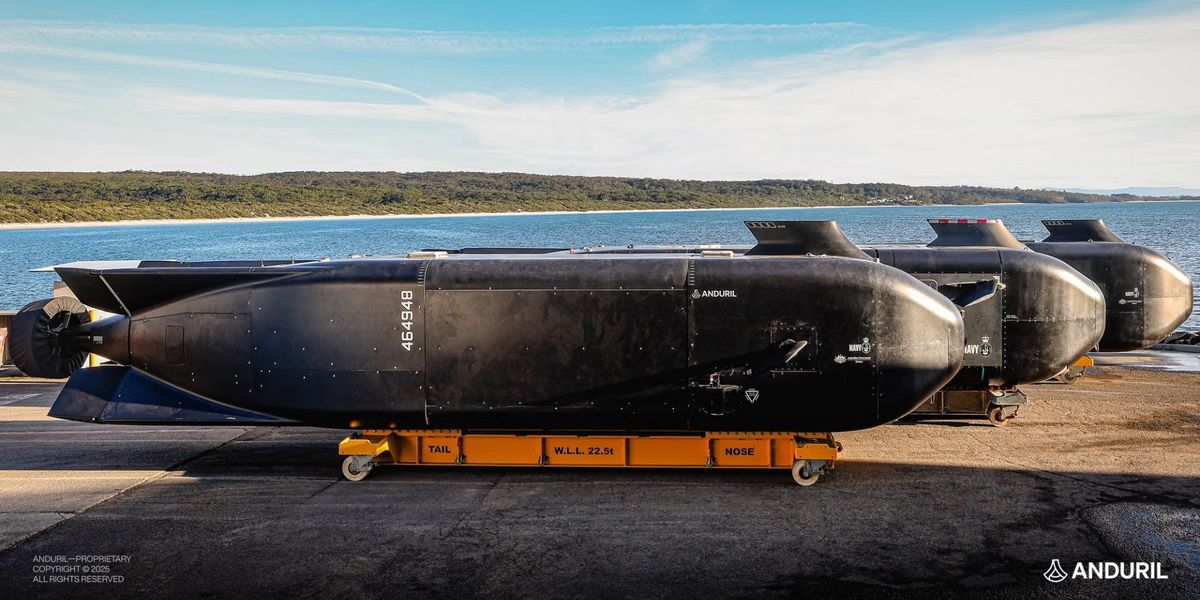
Let’s start with Anduril Industries, which rolled out three major announcements that underline just how quickly it is expanding its footprint across defense tech. The biggest milestone came from Ghost Shark, an extra large undersea drone developed in partnership with the Australian Navy. After just three years, it has moved from prototype to an official program of record, an unusually fast turnaround in an industry where procurement often takes decades. It marks a significant step for autonomous systems under the sea, an area where defense agencies have long struggled to innovate.
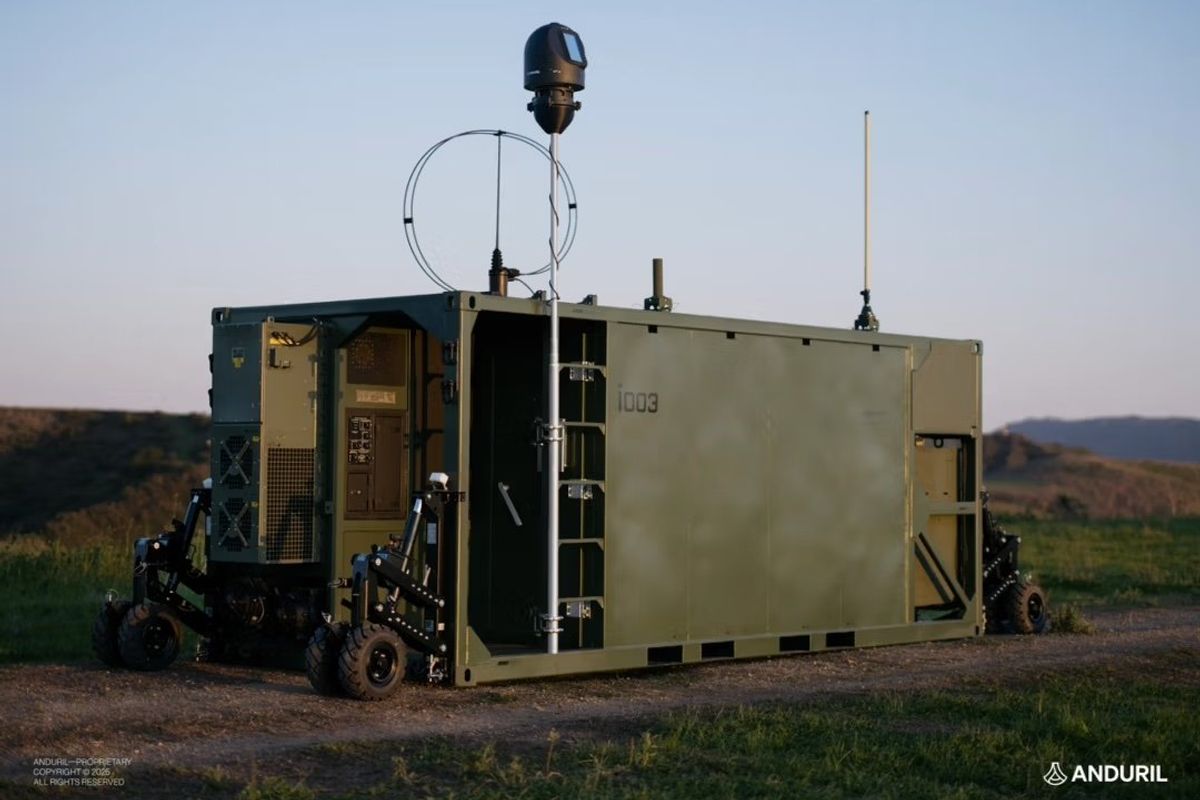
The company also revealed Menace I, a ruggedized system designed to bring petabyte scale processing power directly to the battlefield. Think of it as cloud computing without the cloud, giving troops the ability to process massive amounts of sensor data and video on site rather than relying on faraway servers. And finally, Anduril landed a contract to create mixed reality training tools, using immersive simulations to prepare service members for missions more effectively. Training has always been one of the costliest and most logistically challenging aspects of defense, and bringing advanced MR into the mix could transform how quickly and safely soldiers can get mission ready. Together, these updates show an LA company moving fast across land, sea and even into the training ground.
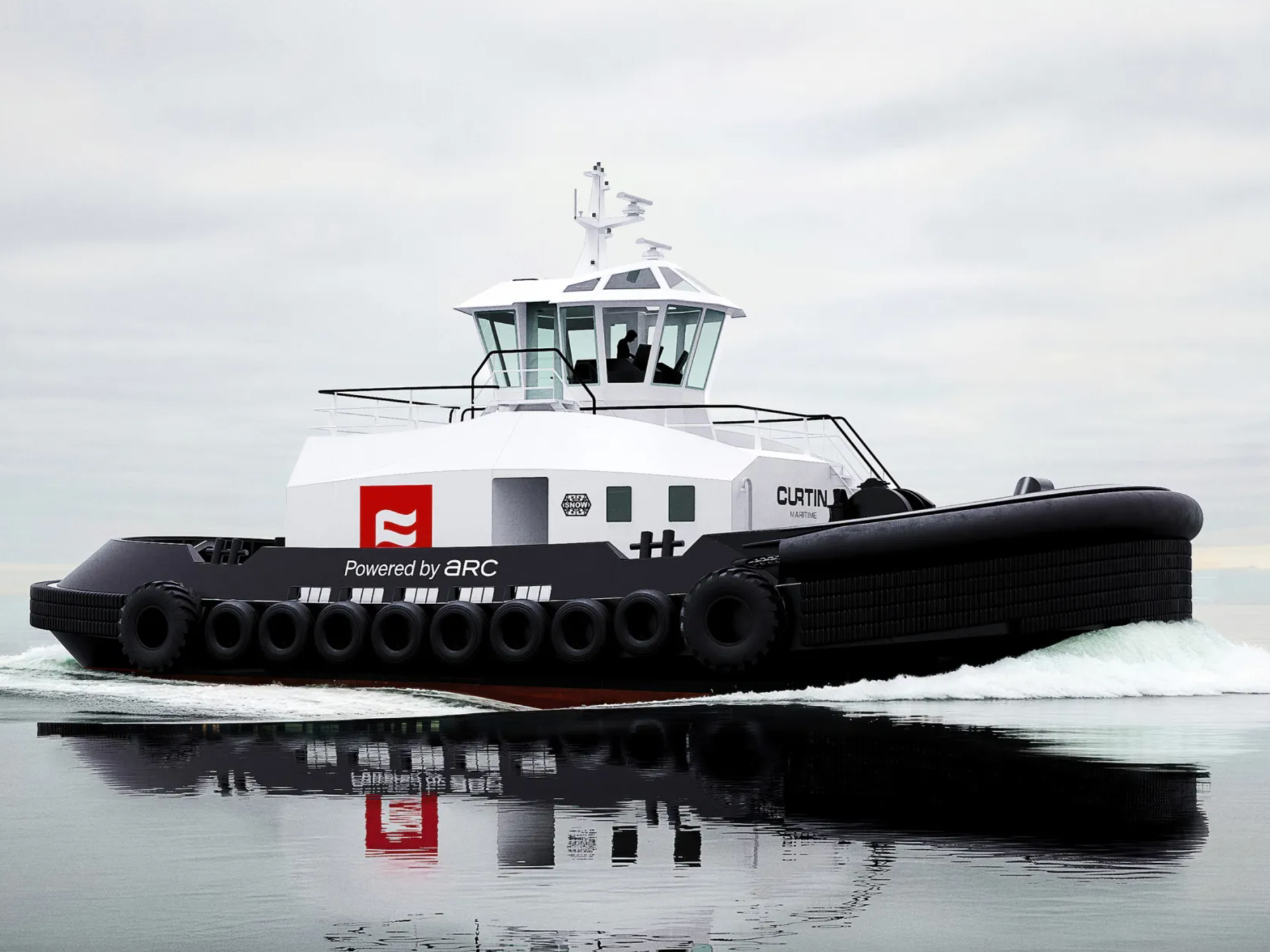
Meanwhile, Arc is proving that electrification is not just for cars and yachts, it is now heading into some of the hardest working vessels on the water. The Venice based startup announced a $160 million deal with Long Beach’s Curtin Maritime to deliver eight hybrid electric tugboats. Tugboats are the muscle of the harbor, guiding massive cargo ships in and out of ports, and they usually burn through enormous amounts of diesel. Arc’s push into this space signals more than just a big contract. It is a pivot from building high performance electric speedboats for early adopters to tackling one of the most carbon heavy corners of maritime work.
The scale of this deal shows how far Arc has come since launching just a few years ago. Building hybrid electric tugboats is not a side project, it is a sign that the company wants to play a role in reshaping the future of port operations. And if LA’s own clean tech boat builder can make a dent in one of the dirtiest industries on the water, the ripple effects could stretch far beyond the coastline.
🤝 Venture Deals
LA Companies
- Apex Space closed a $200M Series D round led by Interlagos, with participation from existing investors including Andreessen Horowitz, Point72 Ventures and 8VC, pushing its valuation past $1 billion. The Los Angeles based company builds satellite buses, the standardized spacecraft platforms that carry and power payloads ranging from Earth imaging sensors to missile early warning systems. With the new funding, Apex plans to increase production capacity by 50 percent and more than double its manufacturing facility as demand for space defense systems continues to grow. - learn more
- Sapphire Technologies has raised an $18M Series C round, including investment from Mitsubishi Heavy Industries along with existing backers such as Equinor Ventures, Cooper and Company and Energy Capital Ventures. The funds will be used to scale up production at Sapphire’s manufacturing facility in Cypress, California, expand global deployments of its FreeSpin In-line Turboexpanders in regions like Japan and enter new markets. Sapphire’s technology converts otherwise wasted pressure energy, often from natural gas, into clean and emissions free electricity, playing a growing role in the global energy transition. - learn more
- LocalExpress has raised $6.2M in a venture round led by OXZ Capital to expand its AI data capabilities into the grocery industry. The Glendale based platform, already serving independent grocery and food retailers across the US, Canada and Latin America, is transitioning from supporting internal operations to becoming a premier data syndication hub in the sector. This round will fuel further development of its unified commerce solutions and help scale its AI-powered systems for harmonizing transaction and inventory data. - learn more
- ProRata.AI closed a $40M Series B financing round led by Touring Capital with participation from Bold Capital Partners and others, to launch Gist Answers, a new AI-as-a-service tool for publishers. Gist Answers lets publishers embed custom AI search, summarization, and recommendation features directly on their sites while maintaining control over their content. The move is designed to help publishers increase engagement, protect their content, and unlock new revenue streams in the AI era. - learn more
LA Venture Funds
- Upfront Ventures joined a group of investors in backing Sophont’s $9.22M seed round, led by Kindred Ventures. Sophont is building multimodal medical foundation models that combine data from pathology slides, brain scans, clinical notes, and lab results to enable functionalities like symptom triage, biomarker discovery, and clinical trial cohort selection. The funding will go toward increasing compute capacity, expanding data partnerships, and recruiting researchers to accelerate the development and release of model backbones and open science infrastructure. - learn more
- Presight Capital participated in the $24M Series A round raised by TERN Group, which was led by Notion Capital. The funding will help TERN scale its AI powered infrastructure for global healthcare worker recruitment, credentialing and mobility, especially helping caregivers and nurses in places like India gain access to international job opportunities. TERN plans to use the investment to expand into new geographies, deepen training programs, and further build tools that make migration, compliance and placement faster, fairer and more transparent. - learn more
- Emmeline Ventures joined a strong syndicate in Lōvu Health’s $8M Series A round, led by SJF Ventures. The funding will support Lōvu in scaling its AI-powered maternal health platform, enhancing remote monitoring, curated specialist services, and ongoing care from pre-conception through the first two years postpartum. With this investment, Lōvu aims to close gaps in maternal healthcare access and outcomes, especially for underserved populations. - learn more
- Integrity Growth Partners led a $28M Series A round in Pest Share, joined by existing investors including MetaProp, Capital Eleven and RE Angels. Pest Share is an on-demand pest control platform tailored for residential property managers, operating in all 48 states and serving 300,000 residential units. The capital will fuel expansion in single-family and multifamily rental markets, enhance product innovation, and deepen integrations with property management systems. - learn more
- Mantis VC joined Forerunner Ventures, Neo, Abstract and several angel investors in backing Hero Assistant’s $3.5M seed round at a $30M valuation. Hero Assistant is building a “Daily Assistant” super-app that consolidates things like calendars, weather, tasks, habits, goals, grocery ordering, notes and news, already replacing up to eight separate apps for its more than 300,000 users. The funds will help the company enhance features, scale growth, and deepen its reach in productivity. - learn more
- Wedbush Healthcare Partners took part in Odyssey Therapeutics’ oversubscribed $213M Series D financing round alongside both new and existing investors. The funding will be used to push forward Odyssey’s pipeline of clinical and preclinical therapies focused on treating complex autoimmune diseases. With this capital raise, Odyssey aims to make progress toward key clinical milestones and bring precision immunomodulation treatments closer to patients in need. - learn more
- BroadLight Capital participated in Higgsfield’s $50M Series A round, which was led by GFT Ventures and also backed by firms like Menlo Ventures and NextEquity Partners. Higgsfield is pushing its “click-to-video” AI platform, which lets users turn curated presets into cinematic clips with a single click rather than wrestling with complex prompts. In only five months since launch, the company has already drawn over 11 million users and more than 1.2 billion social media impressions, signaling strong momentum in the creator video space. - learn more
- Impatient VC participated in Sphinx’s $9.5M Seed round, which was led by Lightspeed and also included investors like Bessemer Venture Partners, Box Group, and K5. Sphinx is launching an AI copilot built especially for data scientists, one that thinks in statistics and patterns to turn raw data into actionable insights without skipping rigor. The funds will go toward refining tools that integrate into workflows like Jupyter notebooks and VSCode so data teams can explore, model, and make decisions faster. - learn more
- WME Group led a $20M Series B round in Palm Tree Crew, valuing the company at $215 million. The funding will power expansion across its hospitality venues, live events, and lifestyle ventures while leaning into WME’s entertainment, licensing, and brand network. Palm Tree Crew plans to scale its properties, deepen its festival footprint globally, and continue growing its portfolio of consumer brands as part of the next chapter. - learn more
- Blue Bear Capital participated in Nuclearn’s $10.5M Series A round that helps the company deepen its AI-capabilities for nuclear operations. Nuclearn, founded by engineers who've worked inside power plants, builds specialized tools like CAP AI to automate safety-critical, documentation-heavy tasks and ensure regulatory compliance. The funding will support product expansion, talent hiring, and scaling its platform to more reactors worldwide. - learn more
- Amplify was one of the investors joining Endurance28 and others in Cascade Bio’s $6M raise, which includes $2.8M in equity and $3.2M in nondilutive funding. Cascade Bio is advancing its enzyme-immobilization technology to help industrial partners transition from petrochemical processes to greener, biomanufacturing workflows. The funding will enable Cascade to scale its high-stability biocatalysts for use across chemicals, food ingredients, fragrances, and pharmaceuticals. - learn more
LA Exits
- Northstar has been acquired by Nayya, combining Northstar’s financial wellness tools with Nayya’s health, compensation and actuarial data platform. The unified offering introduces a “SuperAgent,” an AI adviser that not only helps employees understand benefits but, with their permission, can take actions like auto enrolling in wellness programs or appealing denied claims. The goal is to make health and wealth benefits simpler, more transparent and more useful year round rather than just during open enrollment. - learn more
- Integrated Rental Systems has been acquired by VitalEdge Technologies, a major provider of dealer management software for heavy equipment. Integrated Rental’s platform is considered one of the most advanced in its field, and this deal allows VitalEdge to offer more fully integrated solutions covering rental, parts, and service revenue streams for equipment dealers. Alise Moncure, CEO of Integrated Rental, will join VitalEdge’s leadership team as President of Expansion Markets, leading rental and other high-growth segments. - learn more
- VideoVerse has been acquired by Minute Media, bringing its AI-powered sports video platform Magnifi into the company’s portfolio. Magnifi helps leagues, teams and publishers automatically detect key moments, create instant highlights and distribute short-form video content more efficiently. With the acquisition, Minute Media is expanding beyond publishing to offer a more complete solution for video creation, distribution and monetization. - learn more
- Bespoke Treatment has been acquired by Stella Mental Health, expanding the company’s services in Los Angeles. Known for its integrative approach, Bespoke offers treatments such as stellate ganglion block for trauma, IV ketamine, Spravato® and intensive outpatient programming. Through the acquisition, Stella is broadening its footprint and strengthening its ability to deliver personalized behavioral health care. - learn more
Read moreShow less
RELATEDTRENDING
LA TECH JOBS


